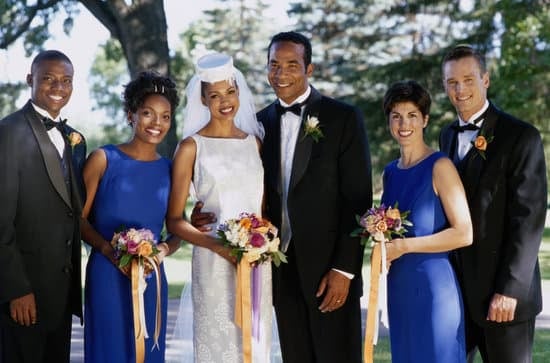Are you wondering how to assemble a wedding bouquet that reflects your unique style and adds a touch of elegance to your special day? Handcrafted wedding bouquets are a beautiful way to customize your floral arrangements and create a personalized accessory for your wedding. From choosing the perfect flowers to adding personal touches, assembling your own wedding bouquet can be a fun and rewarding experience.
When it comes to creating a handcrafted wedding bouquet, the possibilities are endless. Choosing the right flowers is just the beginning – from roses to peonies, each bloom carries its own symbolism and beauty. With the right tools and materials, you can create a stunning bouquet that perfectly complements your bridal look.
In this article, we will guide you through everything you need to know about assembling a hand-tied bouquet for your wedding day. From selecting the best blooms to adding personal touches and keeping your bouquet fresh throughout the day, we’ll provide you with all the tips and tricks you need to create the perfect wedding bouquet. So let’s get started on creating a beautiful masterpiece that will elevate your bridal ensemble.
Choosing the Right Flowers for Your Bouquet
Choosing the right flowers for your wedding bouquet is a crucial step in the wedding planning process. The flowers you choose will not only reflect your personal style and taste but also the overall theme of your special day. From classic roses to delicate peonies, there are endless options to consider when creating your perfect bridal bouquet.
Types of Flowers
When it comes to selecting the right flowers for your bouquet, it’s essential to consider both the aesthetic appeal and the symbolic meaning behind each bloom. Some popular options include:
- Roses: Known for their timeless elegance and romantic connotations, roses are a classic choice for wedding bouquets.
- Peonies: With their lush, voluminous petals and sweet fragrance, peonies exude femininity and are often associated with prosperity and good fortune.
- Tulips: Symbolizing perfect love and happy years, tulips come in various colors and can add a whimsical touch to your bouquet.
Color Scheme
Consider the color scheme of your wedding when choosing flowers for your bouquet. Whether you prefer a monochromatic palette or a vibrant mix of hues, selecting flowers that complement the overall color scheme will ensure a cohesive and harmonious look on your big day.
Seasonal Considerations
It’s important to keep in mind that certain flowers are seasonal. Working with seasonal blooms not only ensures their availability but also helps create a cohesive theme with nature’s offerings during that time of year.
When assembling a personalized wedding bouquet, consider incorporating meaningful elements such as family heirlooms or keepsakes. These personal touches can add sentimental value to your bouquet while honoring loved ones who may not be present on your special day.
Incorporating a piece of lace from your grandmother’s gown or wrapping the stems of the bouquet with a strand of beads passed down through generations can add depth and richness to your floral arrangement.
Additionally, consider adding photo charms or small trinkets that hold special significance to you and your partner. These personal touches will make your bridal bouquet truly unique and memorable.
Tools and Materials Needed
When it comes to assembling a wedding bouquet, having the right tools and materials is essential to ensure that your creation turns out just as you envisioned. Here are the essential items you will need to create your dream bouquet:
- Floral Tape: This will be used to secure the stems of the flowers together, creating a tight and neat bundle.
- Ribbons: Choose a ribbon that complements your wedding color scheme and theme. This will be used to wrap around the stems of the bouquet for a polished look.
- Shears: Sharp, high-quality shears are necessary for cutting and shaping the flower stems to achieve your desired bouquet shape.
In addition to these key items, consider investing in some florist wire and pins if you plan on adding any embellishments or jewels to your bouquet. These extra materials can add a touch of elegance and personalization to your creation.
Before you begin assembling your bouquet, make sure all of these tools and materials are readily available. Having everything prepared in advance will make the process smoother and more enjoyable.
Now that you know what tools and materials you need, let’s move on to a step-by-step guide on how to assemble a hand-tied bouquet.
Step-by-Step Guide to Assembling a Hand-Tied Bouquet
Creating your own hand-tied wedding bouquet can be a beautiful and cost-effective way to add a personal touch to your special day. Whether you’re a DIY enthusiast or simply looking to save on floral costs, assembling your own bouquet can be a rewarding experience. Here’s a step-by-step guide on how to assemble a stunning hand-tied wedding bouquet that will surely make a statement on your big day.
First, gather all the necessary materials including the flowers of your choice, floral tape, ribbons, and shears. Select a variety of blooms that complement each other in terms of color, size, and texture. Popular choices for wedding bouquets include roses, peonies, hydrangeas, and eucalyptus. Once you have all your materials ready, it’s time to start crafting your bouquet.
Start by organizing your flowers into small bunches based on the desired shape and size of your bouquet. Trim the stems to create uniform lengths and remove any excess foliage that may crowd the arrangement. Then, begin building the bouquet by adding one flower at a time, rotating them as you go to create a balanced look from all angles.
Next, use floral tape to secure the stems together as you work through arranging the flowers. Be sure to wrap the tape tightly around the stems to ensure they stay in place. As you continue adding more flowers, adjust their position and height as needed for a cohesive and natural appearance.
Once all the flowers are securely tied together, wrap the stems with ribbon or lace for a finished look. You can also add additional embellishments such as charms or brooches for an extra personal touch. Finally, trim the ends of the stems evenly before placing the bouquet in water until it’s time for the ceremony.
Assembling your own wedding bouquet allows you to express your creativity and personality while creating a timeless memento from your special day. With these simple steps and some practice, you can confidently create a stunning hand-tied bouquet that reflects your unique style and love story.
Adding Personal Touches
When it comes to assembling a wedding bouquet, one way to add a special and personal touch is by incorporating family heirlooms and keepsakes. By including these sentimental items into your bouquet, you can create a meaningful and cherished accessory for your big day.
Choosing the Right Heirlooms
When selecting family heirlooms and keepsakes to incorporate into your wedding bouquet, it’s important to choose items that have significant meaning to you and your loved ones. This could include pieces of jewelry such as brooches, lockets, or rings that have been passed down through generations. Other options could be handkerchiefs, lace from a grandmother’s wedding dress, or small photographs of beloved family members.
Incorporating Keepsakes Into Your Bouquet
Once you’ve chosen the heirlooms and keepsakes you want to include in your bouquet, consider how best to integrate them into the arrangement. For instance, you could attach a small locket containing a photo of a loved one to the handle of the bouquet, or pin a vintage brooch onto the ribbon wrapping around the stems. Another idea is to incorporate lace or fabric from a family wedding gown into the actual design of the bouquet itself.
The Sentimental Value
Incorporating family heirlooms and keepsakes into your wedding bouquet not only adds sentimental value but also serves as a beautiful way to honor and remember loved ones who may not be present on your special day. It can also serve as an opportunity to include pieces of history and tradition into your celebration, creating an even more meaningful and memorable experience for both you and your guests.
Tips for Keeping Your Bouquet Fresh Throughout the Wedding Day
On your wedding day, you want your handcrafted bouquet to look as fresh and beautiful as when you first assembled it. Here are some tips to ensure that your bouquet stays fresh throughout the day, so you can cherish it in pictures for years to come.
Choosing the Right Flowers
The type of flowers you choose can have a significant impact on how long your bouquet will last. Opt for hardy blooms like roses, peonies, or orchids that can withstand the wear and tear of a full day of celebrations. It’s also important to consider the seasonality of your chosen flowers, as certain blooms may wilt more quickly in warm weather.
Preparation and Storage
To keep your bouquet fresh, make sure to prepare and store it properly before the wedding. Trim the stems at an angle and place them in water until just before the ceremony begins. Keep your bouquet in a cool place away from direct sunlight, heat, or drafts. Consider using a floral preservative in the water or spritzing the blooms with water to keep them hydrated.
Handling Throughout the Day
Once it’s time to carry your bouquet down the aisle and throughout the day, handle it with care. Avoid holding it too tightly or crushing the delicate petals. If possible, designate a trusted bridesmaid or family member to hold onto your bouquet during moments when you don’t need to carry it, such as during photos or while eating dinner.
By following these tips and handling your bouquet with care, you can ensure that it looks fresh and vibrant from start to finish on your wedding day. With proper preparation and storage, along with gentle handling throughout the day, you’ll be able to enjoy your beautiful handcrafted bouquet without worry.
Alternative Bouquet Styles
When it comes to choosing the perfect wedding bouquet, there are a variety of styles to consider beyond the traditional hand-tied bouquet. Three popular alternative styles include cascading, nosegay, and posy bouquets. Each style offers its own unique look and can complement different wedding themes and dress styles.
Cascading bouquets are known for their flowing shape that drapes gracefully downward. These bouquets typically feature long-stemmed flowers such as orchids, lilies, or ivy and are an excellent choice for formal weddings. The cascade effect adds a touch of elegance and drama to the overall bridal look.
On the other hand, nosegay bouquets are compact and round in shape, often consisting of one or more types of flowers tightly bound together. This style is versatile and works well with various wedding themes. Brides who want a classic and timeless bouquet often opt for a nosegay style.
Finally, posy bouquets are small, round bouquets that are perfect for brides who prefer simplicity. With just a few stems of flowers tightly wrapped together with ribbon, this style is understated yet charming. Posy bouquets can be made with any type of flower but are especially popular with roses or peonies.
These alternative bouquet styles add variety to your choices when planning your wedding bouquet. Whether you want a dramatic cascading bouquet or a simple posy bouquet, there is a style that will perfectly complement your wedding day look. With the right combination of flowers, ribbons, and greenery, you can create a stunning bouquet that reflects your personal style.
| Bouquet Style | Key Features |
|---|---|
| Cascading | Flowing shape; long-stemmed flowers; adds drama |
| Nosegay | Compact and round; versatile; classic look |
| Posy | Small and round; understated yet charming; simple design |
Final Touches
After assembling your wedding bouquet, it’s time to give it the final touches to ensure that it looks perfect on your big day. The wrapping and presentation of your bouquet can make all the difference in how it complements your wedding attire and overall theme.
One popular way to wrap a wedding bouquet is by using satin or silk ribbons. You can choose a ribbon that matches your wedding color scheme or opt for a classic white or ivory ribbon for a timeless look. To achieve an elegant finish, start by securing the stems with floral tape and then carefully wrap the ribbon around the stems, making sure to secure it with small pins or glue at the end.
In addition to wrapping, presentation is key when it comes to showcasing your wedding bouquet. Many brides choose to display their bouquets in elegant vases during the ceremony and reception. This not only adds a decorative touch to the venue but also keeps the bouquet fresh and in place throughout the festivities. Some brides even choose to preserve their bouquets after the wedding as a beautiful keepsake.
| Final Touches | Wrapping and Presentation |
|---|---|
| Ribbon | Choose satin or silk ribbons that complement your wedding colors |
| Vase Display | Display your bouquet in an elegant vase for a decorative touch |
Bonus Section
In conclusion, assembling your own wedding bouquet can be a beautiful and rewarding experience. From choosing the right flowers to adding personal touches, creating a handcrafted bouquet allows you to express your individual style and personality on your special day. By following a step-by-step guide and using the right tools and materials, you can easily create a stunning bouquet that perfectly complements your wedding theme and color scheme.
One of the most important aspects of assembling a wedding bouquet is choosing the right flowers. Whether you prefer classic roses or delicate peonies, selecting the perfect blooms will set the tone for your entire bouquet. Additionally, adding personal touches such as incorporating family heirlooms or keepsakes can make your bouquet even more meaningful and unique.
Furthermore, it’s essential to keep your bouquet fresh throughout the wedding day. With proper care and preparation, you can ensure that your flowers remain vibrant and beautiful from the ceremony to the reception. Finally, with alternative bouquet styles such as cascading, nosegay, and posy bouquets, you have the option to explore different designs that suit your preferences.
In addition, with leftover blooms from your bouquet, you can even create a stunning DIY flower crown as an additional accessory for your bridal look. Overall, assembling a wedding bouquet is not only a creative endeavor but also a way to infuse your wedding with personal touches and meaning.
Frequently Asked Questions
How Do You Put a Bouquet Together?
Putting a bouquet together involves selecting the flowers and greenery, arranging them in a pleasing manner, and securing them with floral tape or wire. It’s important to consider balance, color, and texture for an attractive arrangement.
What Holds a Bridal Bouquet Together?
A bridal bouquet is typically held together by floral tape or wire. These materials are used to secure the stems of the flowers and greenery in place, creating a cohesive and well-structured arrangement that can be held easily by the bride.
When Should You Assemble a Wedding Bouquet?
It’s best to assemble a wedding bouquet the day before or on the morning of the wedding day. This allows the flowers to fully bloom and look their best for the ceremony. However, certain hardy flowers may be arranged a few days in advance. Timing will depend on the specific types of flowers used in the bouquet.

I have been involved in marriages for over 20 years helping couples and singles understand more about them.





